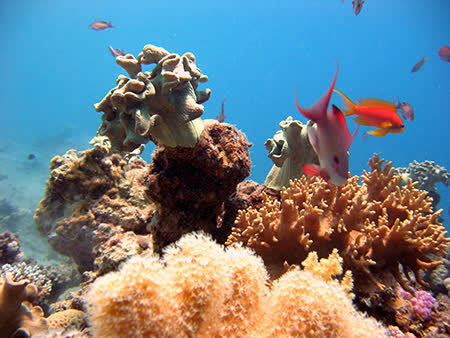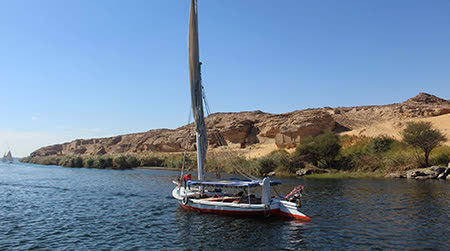Hurghada was once just a tiny fisher village, with a location that seldom brought strangers here. Even in late 1970’s this was the situation, but with the nature around, the clarity of the water, and the endless opportunities for divers, Hurghada was destined to become an Egyptian centre for pleasure tourism.
Today, the result is a stretch of 20 km with beach hotels. Most of these hotels are organized in an attractive way, but far from the true Egypt of great monuments, traffic jams and mud brick houses.
But this makes Hurghada a successful tourist resort for divers and swimmers. Huge crowds of Egyptians, Saudis and other Arabs have since long joined the stream of Europeans and Americans coming here throughout most of the year.
There are a couple of drawbacks, though. Non-hotel beaches are not terribly great, but often crowded. While the fish life is just what you hoped for right off the beach, there are no corals here anymore. This can only be discovered by joining one of the many boat expeditions out to the nearby islands. Giftun is the largest, and lies about 10 km from Hurghada.
Hurghada is in reality three main centers and numerous self-contained tourist villages now growing into one body. To the north, lies the place that is closest to being a town, Ad-Dahar, which has more than half of the total local population, and the most price worthy hotels and restaurants. A couple of kilometers south, comes Sigala, a place that suffers from being between Ad-Dahar and New Hurghada a few kilometers more to the south. There are some hotels here, some restaurants, but relatively few tourists. In New Hurghada total tourism comes alive, offering every amenity a visitor is looking for.













